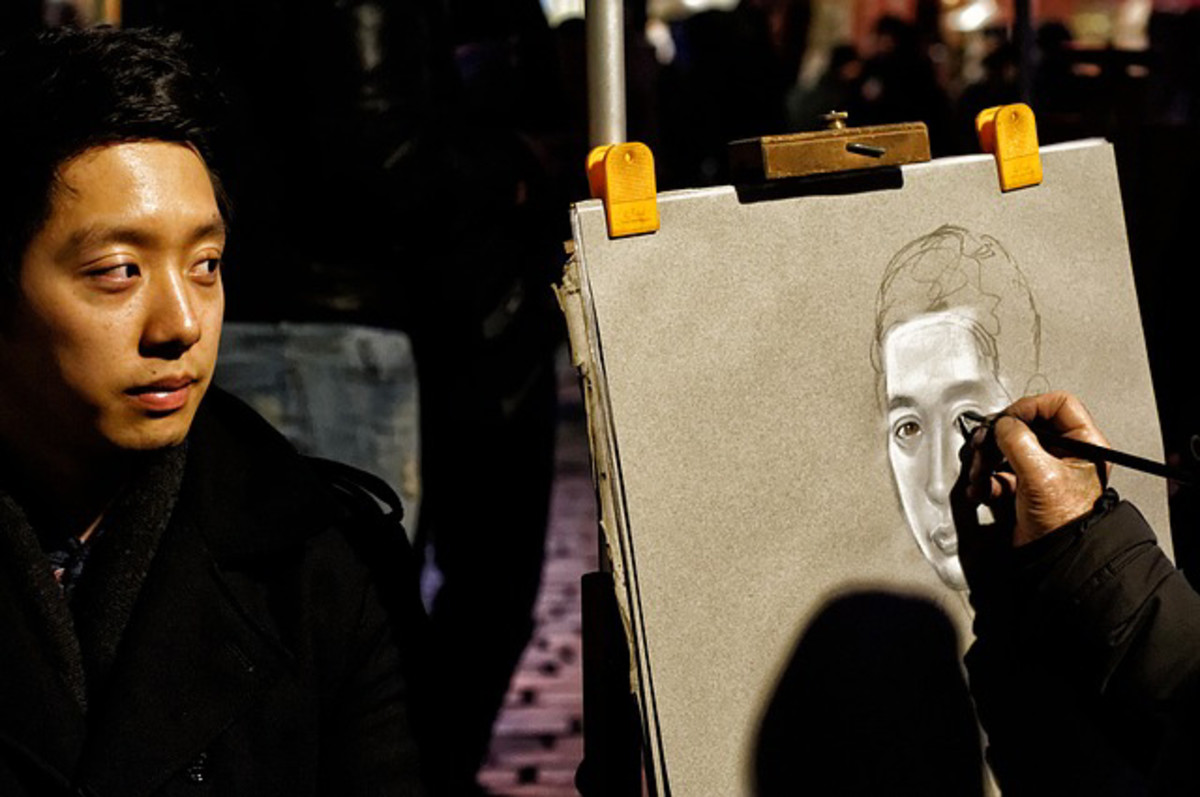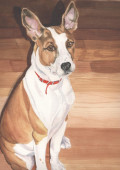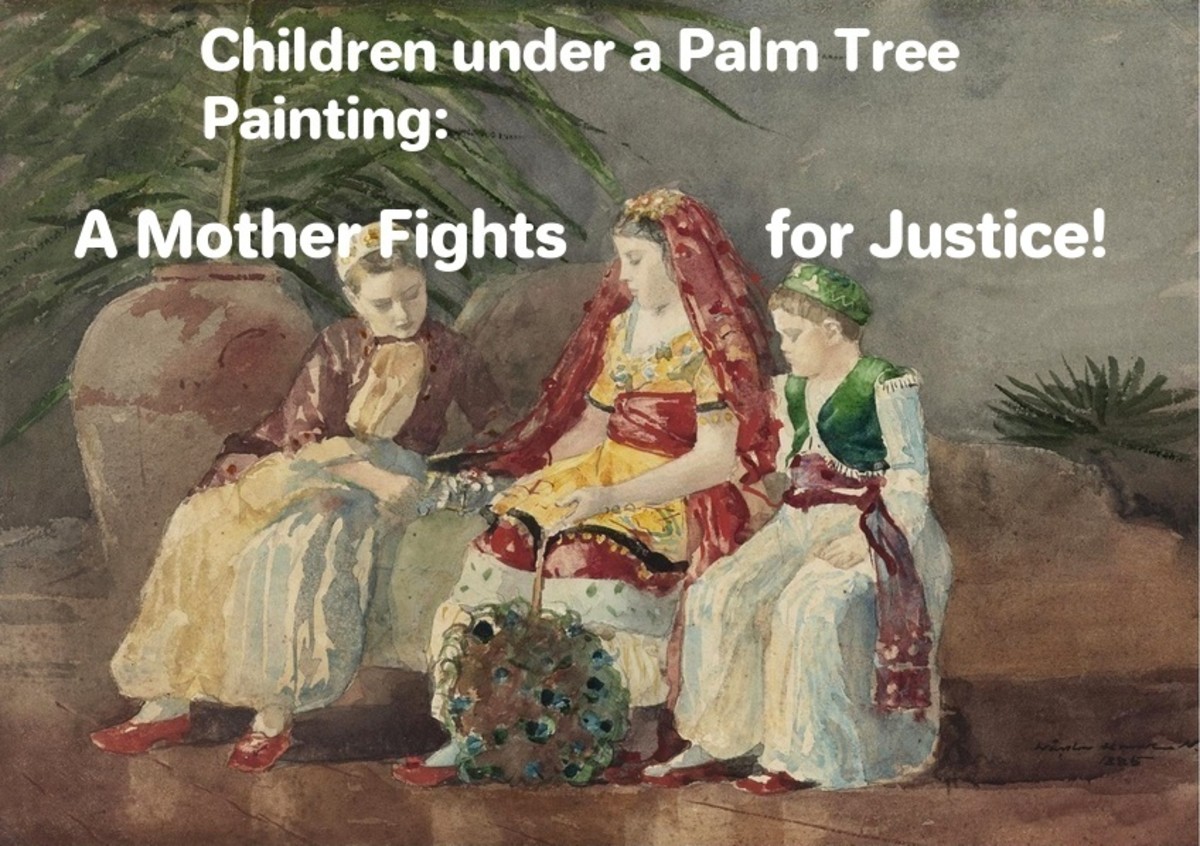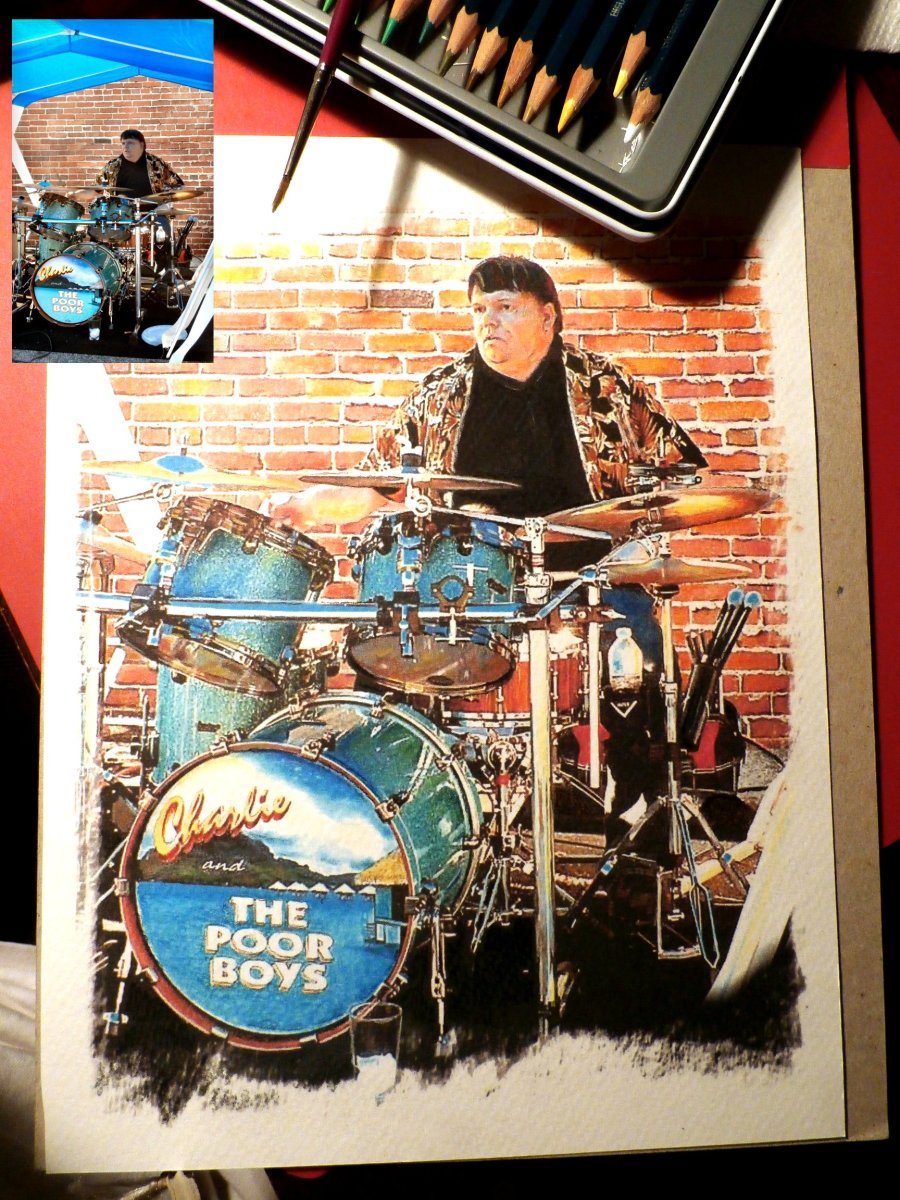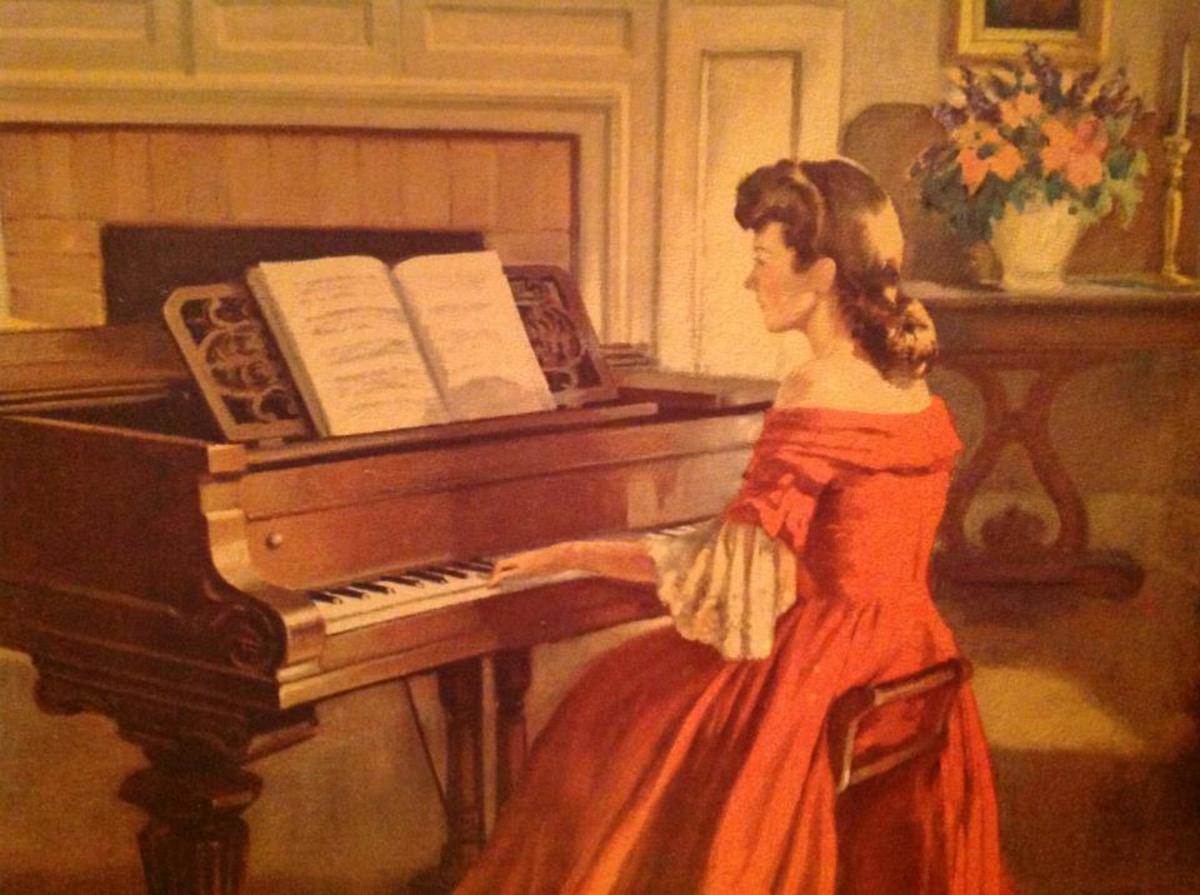How to Create a Compelling Watercolor Portrait
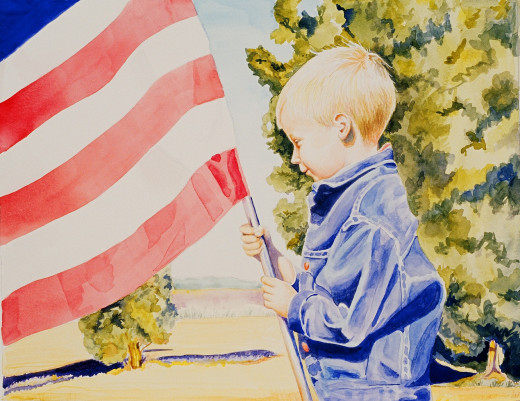
Many artists are intimidated by the prospect of creating a portrait of an individual in watercolor. They need not be! Watercolor is a wonderful medium for capturing the ethereal nature of the subject, and very amenable to portraying the subtle changes in coloring that occur in people's faces. As with any artistic endeavor, practice and study are the best predictors of future success. In this hub, I will document the progress I am making in creating a watercolor portrait of a female subject in profile. The single most important aspect of a successful portrait (or any painting, for that matter) is an accurate and sensitive drawing. Again, the importance of practice and experience cannot be overstated. Work, evaluate, and revise your drawing until you are quite satisfied with the likeness and "attitude" of the drawing. There are tons of resources to help you with your drawing and painting skills. I would suggest you read books, watch videos, take classes from artists whose work you admire, but most of all practice!
When creating portraits, the issue of "likeness" is bound to come up. In your early attempts at portraiture, it's probably best to create portraits for yourself rather than a "client." This helps relieve the pressure to flatter or to achieve an exact likeness. Once you gain experience and confidence in your work, you may consider accepting commissions for paid work. Today, almost all portrait artists work from photographs of the subject. This allows for careful study of the the subject without requiring the poor person to hold still indefinitely! I would warn you, though, that it is very helpful to spend at least some time sketching the subject from life in the pose you wish to paint them. This helps give greater intimacy to your portrait and allows the subject's personality to shine through your work. In my case, the subject is adapted from a drawing from an old world history book, so live sittings in this case were impossible.
A word should be said here about posing and lighting your subject for a portrait. When posing your subject, watch for mannerisms and positions that seem natural or habitual for that person. Arrange for dramatic lighting that helps accentuate the subject's features. Dramatic lighting helps provide contrast that will add interest to the painting.
Resources to help your portraiture
My portrait of Pope John Paul II shows how dramatic lighting can increase a painting's emotional impact.
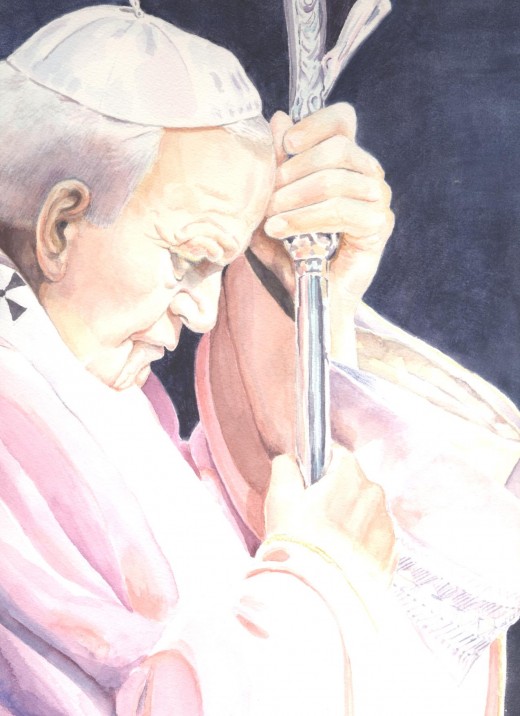
The drawing should be refined to the point at which you feel confident you can proceed to painting. Make sure you have given yourself enough visual information in the drawing to be able to apply paint with assurance. The drawing of the subject should limit itself to outlines without shading. You will rely on the varying washes to indicate lights and darks. When I have my pencil drawing ready, I like to make full size xerox copies of the drawing. I use these copies to transfer the drawing onto the watercolor paper. I generally use watercolor blocks (pads of watercolor paper that are glued together on all four sides). This allows you to paint with wet washes without the paper buckling or warping. When I'm ready to transfer my drawing I center the xerox copy over the watercolor block. I put a sheet of graphite paper between the xerox and the block, graphite side facing the watercolor block. I tape this all in place with masking tape to make sure the layers do not shift. Then I carefully trace over the lines on the xerox. This transfers the drawing (lightly) onto the watercolor paper.
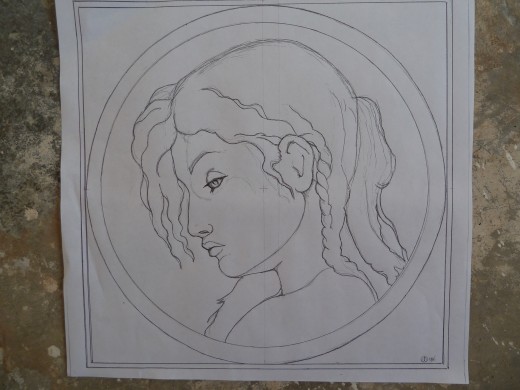
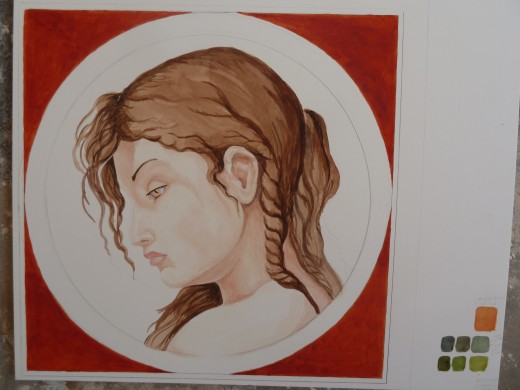
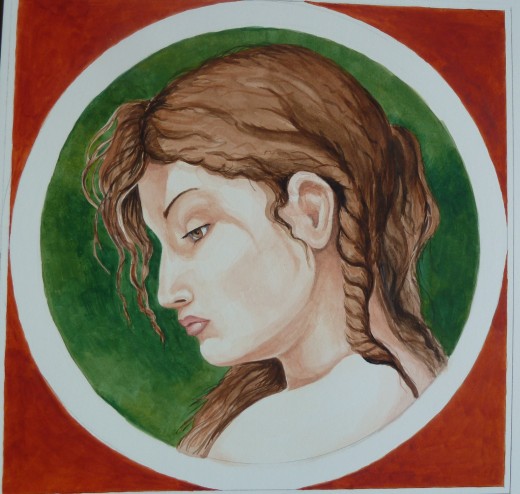
In another article I will write about color choices, but suffice to say that is best to limit your palette to very few colors. You can mix these paints to create a wide range of hues. Basically three colors (yellow, blue, and red - a warm and cool variety of each) along with a rich dark brown (burnt umber, for example) will usually be plenty to create most any painting. The benefits of a limited palette are several. First, using fewer colors is easier to control. Secondly, this limited palette gives your paintings a sense of unity. If all of the colors you mix come from just a few basic choices, you will be much less likely to have discordant or clashing colors in your final painting. Experiment with your colors to reassure yourself that a wide range of hues are possible from your few base colors.
When you begin applying paint, comfort yourself with the knowledge that it is less important to portray accurate color than it is to render believable light and shading and, of course, correct proportions. Apply paint in layers of washes, progressing (generally) from light to dark. Let each layer of wash dry completely before continuing with the next wash. As you build up washes, remember to portray a full spectrum of lights and darks. With watercolor you are able to mix deep and lustrous darks - do not be afraid of using darks! Juxtaposing your lightest lights against your darkest darks creates great interest and drama to your paintings.
As you practice with your washes, you will learn a great deal about how the paint and water interact. You will learn how much (or how little) water to use for a given passage in your painting. With experience and patience, I know you will discover the never ending challenge and joy of portraying a person using this wonderful medium.
I hope this hub has been instructive and inspiring to you. Give yourself permission to experiment and don't judge your efforts too soon or too harshly. Please take a moment to leave a comment. I'd love to hear from you. More of my work can be seen at my website, ruralgirlgraphics.com.


